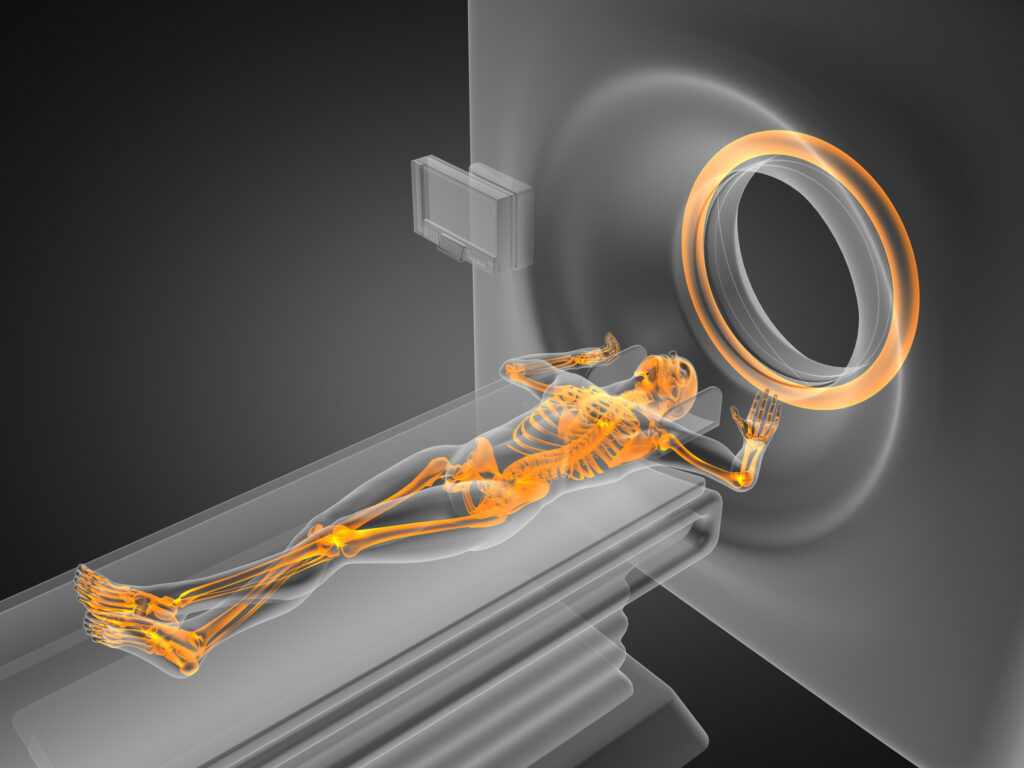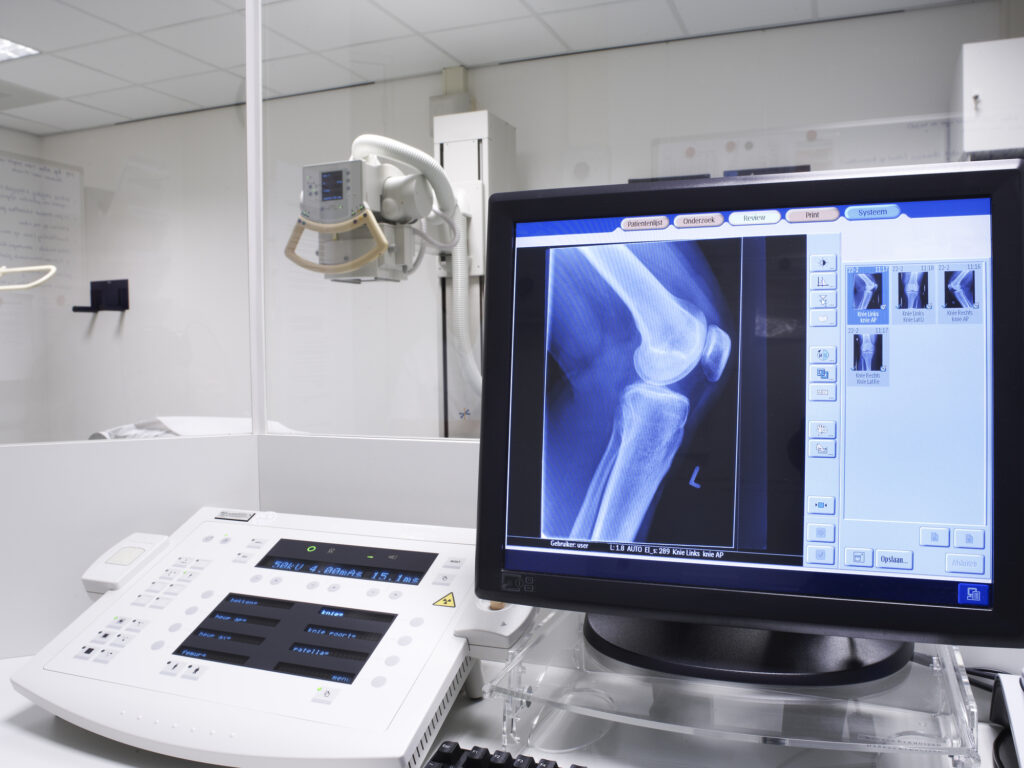Over 1,200 cyclotrons globally bolster nuclear medicine by producing vital radionuclides for prompt diagnostic use.
Global Network of Cyclotrons: Enhancing Diagnostic Precision in Nuclear Medicine
There are more than 1,200 operational cyclotrons in various institutions, which are crucial to producing medical radionuclides. This has significantly enhanced the accessibility of nuclear medicine, leading to more accurate and efficient diagnostic processes. Cyclotrons stand out from nuclear research reactors, which have been the traditional sites for producing radiopharmaceuticals. Unlike these reactors, cyclotrons do not rely on a radioactive source and boast a simpler installation and operation process. This has enabled their integration directly within hospital settings, facilitating immediate access to essential diagnostic tools.
Worldwide, cyclotrons contribute to the production of about 12% of all radiopharmaceuticals. However, the demand for these machines is on the rise as an increasing number of radionuclides they produce find applications in research, diagnosis, and treatment of critical illnesses such as cancer, Alzheimer’s disease and Parkinson’s disease.
Radiopharmaceuticals, enriched with radioisotopes, are commonly utilised in medical imaging to visualise organs or tissues, detect diseases, and monitor the progression or regression of tumours. Cyclotrons predominantly produce radioisotopes with short half-lives, meaning they rapidly lose their radioactivity, usually within a few hours. This characteristic makes them less suitable for lengthy transportation. For example, Examples are radioisotopes fluorine-18, carbon-11, oxygen-15, and nitrogen-13, all of which are integral for positron emission tomography (PET) imaging. PET is a leading imaging technology known for its ability to generate high-quality three-dimensional images of specific organs or cells, aiding in disease diagnosis.
A particular case, gallium-68 (Ga-68), has been produced using a ‘generator’ with a lifespan of only one year and capable of serving four to six patients daily. Conversely, Cyclotrons can produce Ga-68 for up to around 20 patients daily at a lower cost. Currently, at least ten centres around the world have adopted this method. The International Atomic Energy Agency (IAEA) has proactively released the “Gallium-68 Cyclotron Production” publication and initiated a coordinated research project to facilitate international expertise exchange on cyclotron-based Ga-68 production.
Additionally, the IAEA is developing guidelines to augment and fortify the utilisation of zirconium-89 (Zr-89), a PET radioisotope with a relatively prolonged half-life of 3.3 days. This is substantially longer than the 1 hour and 50 minutes half-life of fluorine-18. The extended half-life of Zr-89 allows medical professionals to observe the behaviour of molecules within the human body meticulously. It is also instrumental in clinical trials for tracking antibodies during cancer therapy sessions.
How do cyclotrons work
Cyclotrons are particle accelerators that accelerate charged particles, such as protons or ions, to high energies. They work on the magnetic field principle, which causes the particles to move in a circular path.
- The charged particles are generated by an ion source, which can be a simple electron gun or a more complex device like a duoplasmatron.
The Duoplasmatron serves as a source of ions, utilising a cathode filament to release electrons into a vacuum-sealed chamber. When a small amount of a gas, typically argon, is injected into this chamber, it undergoes ionisation upon contact with the cathode’s free electrons, transforming into a plasma state. Following its creation, the plasma is propelled through at least two strongly charged grids, undergoing acceleration and ultimately forming a high-speed ion beam. This ion beam exits the Duoplasmatron through its aperture, ready for various applications.
- The particles are injected into the centre of a cyclotron, a large, cylindrical chamber surrounded by a strong magnetic field.
- The magnetic field causes the particles to move in a circular path as they are accelerated by a series of electric fields that are timed to switch polarity at the right moment to keep the particles moving in the same direction.
- As the particles move around the cyclotron, they gain energy with each revolution. When they reach the desired energy level, they are extracted from the cyclotron and directed towards a target, where they can be used for various purposes, such as medical imaging or cancer treatment.
Cyclotrons are used in various applications, including medical research, nuclear physics, and radioisotope production. They are an important tool for exploring the structure of matter and the nature of the universe.
The cyclotron was invented by physicists Ernest O. Lawrence and M. Stanley Livingston in 1930 at the University of California, Berkeley. The idea for the cyclotron came to Lawrence while he was investigating the atomic nucleus’s properties using a cloud chamber.
Lawrence realised he could use a magnetic field to cause charged particles to move in a circular path by applying a radiofrequency electric field at the right time and accelerating the particles to higher energies. This approach allowed them to study the properties of atomic nuclei in much greater detail than was possible with existing equipment.
Lawrence and Livingston built the first cyclotron using a vacuum tube and a large, horseshoe-shaped magnet. The device was only a few inches in diameter, but it could accelerate protons to energies of several million electron volts.
Over the next few years, Lawrence and his team continued to refine the design of the cyclotron, building larger and more powerful versions capable of accelerating particles to even higher energies. By the mid-1930s, cyclotrons were being used in nuclear physics research around the world, and they played a vital role in developing the atomic bomb during World War II.
In the following decades, cyclotrons continued to be used for a wide range of scientific and medical applications, including the production of medical isotopes for cancer treatment and the study of the properties of subatomic particles. Cyclotrons are still an important tool for researchers and scientists in nuclear physics, materials science, and medical imaging.
Types of Cyclotrons
The two main types of cyclotrons are the classic or conventional cyclotron and the isochronous cyclotron. The classic cyclotron is the original design of the cyclotron and consists of a large, circular chamber with a magnetic field perpendicular to the plane of the chamber. The magnetic field makes the charged particles move in a circular path, and radiofrequency electric fields are used to accelerate the particles. The classic cyclotron has a limit to the maximum energy it can achieve due to relativistic effects.
The isochronous cyclotron is a modified version of the classic cyclotron that uses a more complex magnetic field to compensate for the relativistic effects at higher energies. This allows the isochronous cyclotron to accelerate particles to much higher energies than the classic cyclotron. The magnetic field in the isochronous cyclotron is designed to increase as the particles’ energy increases, allowing the particles to remain in sync with the oscillating electric fields.
In addition to these two main types, specialised variations of cyclotrons are designed for specific applications. For example, the compact cyclotron is a smaller version of the classic cyclotron that is used for medical isotope production, while the superconducting cyclotron uses superconducting magnets to generate a stronger magnetic field and achieve higher energies than the conventional cyclotron.
Cyclotrons have many medical applications, including the production of medical isotopes for use in nuclear medicine and cancer treatment. Some of the medical applications of cyclotrons are:
- Production of Medical Isotopes:
Cyclotrons are used to produce medical isotopes that are used in nuclear medicine procedures, such as positron emission tomography (PET) scans. The cyclotron is used to produce isotopes, such as fluorine-18, that are used to make radioactive tracers injected into the body and detect and image diseases such as cancer.
- Cancer Treatment:
Cyclotrons are used to produce high-energy proton beams that are used to treat cancer. Proton therapy uses a beam of high-energy protons to target cancer cells while minimising damage to healthy tissues. Cyclotrons are used to produce the proton beams needed for proton therapy.
- Radiopharmaceutical Production:
Cyclotrons are used to produce radiopharmaceuticals, which are used to treat cancer and other diseases. Radiopharmaceuticals are drugs that contain radioactive isotopes that are used to target and destroy cancer cells. Cyclotrons are used to produce the radioactive isotopes needed for radiopharmaceuticals.
- Research:
Cyclotrons are used in medical research to study the properties of diseases and develop new treatments. Cyclotrons can be used to produce radioactive isotopes to study the behaviour of drugs in the body and the metabolism of diseases and other conditions.
Cyclotron Produced Radioisotopes
Cyclotrons can produce a wide range of medical radioisotopes that are used in various medical applications. The common medical radioisotopes in the table below can be produced from a cyclotron:
| Radionuclide | Applications |
| Fluorine-18 (F-18) | PET imaging for the diagnosis of various diseases, including cancer, heart disease, and neurological disorders |
| Carbon-11 (C-11) | PET imaging for the diagnosis of cancer, brain disorders, and heart disease |
| Nitrogen-13 (N-13) | PET imaging for the diagnosis of heart disease |
| Oxygen-15 (O-15) | PET imaging for the diagnosis of heart disease and lung disorders |
| Gallium-68 (Ga-68) | PET imaging for the diagnosis of prostate cancer and neuroendocrine tumours |
| Iodine-123 (I-123) | SPECT imaging for the diagnosis of thyroid disorders |
| Copper-64 (Cu-64) | PET imaging for the diagnosis of cancer |
| Yttrium-90 (Y-90) | Radiation therapy for the treatment of cancer |
| Strontium-89 (Sr-89) | Radiation therapy for the treatment of bone cancer |
| Technetium-99m (Tc-99m) | Used in a variety of imaging procedures, including SPECT and planar imaging, for the diagnosis of various diseases and conditions |
These are just a few examples of the medical radioisotopes that can be produced from a cyclotron. Cyclotron-produced medical isotopes have revolutionised the field of nuclear medicine, allowing for more accurate diagnosis and treatment of various diseases and conditions.
Cyclotrons will continue to play an important role in the future of medical imaging, particularly in the field of positron emission tomography (PET) imaging.
The future areas of research into cyclotron technology include:
- Higher energy cyclotrons allow for the production of new and more complex radioisotopes. This will enable new applications in medical imaging, such as the use of novel radiotracers for early diagnosis of diseases and the development of more targeted therapies.
- Efficiency improvements are being made to cyclotrons, reducing the time and cost of producing medical isotopes. Newer designs of cyclotrons can produce more isotopes with lower power consumption and shorter time frames.
- Integrating cyclotrons with other imaging technologies, such as MRI and CT, will allow for more precise and comprehensive imaging of the body. Combining these technologies will enable the production of high-resolution images that can provide detailed information about the structure and function of organs and tissues.
- Portable cyclotrons are being developed that can be used in hospitals and clinics to produce medical isotopes on-site. This will eliminate the need for transportation of radioactive materials and reduce the waiting time for patients to receive their medical scans.
Conclusion
The future of cyclotrons in medical imaging is promising, especially in the advancements in technology and efficiency to improve the quality and accessibility of medical imaging, leading to more accurate diagnosis and treatment of various diseases and conditions.
Furthermore, proton therapy uses a cyclotron to produce the high-energy proton beams that are used to treat cancer. Cyclotrons are used to accelerate protons to very high speeds and energies, which are then directed to a patient’s tumour to destroy cancer cells.
The proton therapy process begins with the creation of a beam of protons, which is produced by a cyclotron or a synchrotron. The protons are then focused and directed to the tumour site using a complex system of magnets and collimators. Once the proton beam reaches the tumour site, it delivers a dose of radiation that is targeted to the cancer cells while minimising damage to healthy tissues.
Cyclotrons are preferred for proton therapy because they can produce high-energy proton beams with a relatively small footprint, making them suitable for use in hospitals and clinics. The use of cyclotrons in proton therapy has revolutionised cancer treatment, as it allows for more precise targeting of tumours, fewer side effects, and improved patient outcomes.
One of the most powerful cyclotrons in the world is the TRIUMF cyclotron, located in Vancouver, Canada. This impressive machine can accelerate protons to energies of up to 500 MeV (mega-electron volts), making it a vital tool for various scientific research and medical applications.
The TRIUMF cyclotron is a type of particle accelerator that uses magnetic fields to propel charged particles to high speeds. The particles are injected into the centre of a circular chamber and then accelerated outward by a rapidly changing electric field. As the particles gain speed, they are held in a circular path by a strong magnetic field.
This cyclotron is unique in its power and capabilities, and it is used by scientists from around the world for experiments in nuclear and particle physics, molecular and materials science, and nuclear medicine. One of the key applications of the TRIUMF cyclotron is the production of medical isotopes, which are used in diagnostic imaging and cancer therapy. The ability to produce these isotopes quickly and in large quantities is critical for the healthcare industry, and the TRIUMF cyclotron plays a crucial role in meeting this need.
Overall, the TRIUMF cyclotron is a remarkable machine showcasing particle accelerators’ incredible power and wide-ranging applications in science and medicine.
Another powerful cyclotron in medicine is the Cyclone-70 at the University of Liège in Belgium. The Cyclone-70 is a compact cyclotron capable of producing a wide range of medical isotopes, including Fluorine-18, Carbon-11, and Gallium-68, for PET imaging.
The Cyclone-70 has a maximum proton energy of 70 MeV and can produce a beam of up to 1.2 mA. This makes it one of the world’s most powerful and versatile medical cyclotrons. The compact design of the Cyclone-70 also makes it suitable for use in hospitals and clinics, where it can produce medical isotopes on-site.
Disclaimer
The information presented in this article, “The Pivotal Role of Cyclotrons in Radionuclide Production,” is intended for educational and informational purposes only. While every effort has been made to ensure the accuracy of the content at the time of publication, Open Medscience makes no warranties or representations as to its completeness, reliability, or suitability for any specific purpose.
This article does not constitute medical, scientific, or technical advice and should not be used as a substitute for professional consultation with qualified experts. Readers are advised to independently verify any information before acting upon it, particularly in clinical, research, or regulatory settings.
References to specific technologies, institutions, or equipment do not imply endorsement, and the views expressed are those of the authors and do not necessarily reflect the official policy or position of Open Medscience or any affiliated organisations.
Open Medscience assumes no responsibility or liability for any loss or damage resulting from the use or misuse of information contained in this article.
You are here: home » diagnostic medical imaging blog »



